Maragha and people of Maragha are probably incurable wounds of Artsakh. People of Artsakh, who survived a severe genocide in the village of Maragha in the Martakert province in April of 1992, are again on the road to migration. Nor Maragha doesn’t exist either; that was home for these people after the First Nagorno-Karabakh War. This area was returned to Azerbaijan in Autumn of 2020 together with other settlements of Aghdam province.
The more difficult and painful the past and present of the people of Maragha is, the more silent and unresponsive it is. Today, almost 30 years after the horrific massacre, we state that the Maragha tragedy hasn’t received the appropriate assessment and attention among the international community and also in Armenia.
Roma Karapetyan was leading a self-defence brigade of the people of Maragha at the First Nagorno-Karabakh War, on the unfortunate day of April 10 in 1992. We spoke with him about those crucial moments for Maragha and the pivotal episodes that were less covered.
I call Maragha a heroic battle. Our village was attacked many times. But now I will mention 3 of them that were more large-scale. One of them was over the night of 25-26 February on Khojaly operation, then on April 10 and on May 11. Our village was at the border. Maragha and Margushevan villages were united in one community. People from Margushevan came from Mirbashir province at the beginning of 20th century from Begyumsarov village. During massacres in 1919 and 1920, people of Begyumsarov were displaced and came to our place.
Maragha and Margushevan as a united sovkhoz was called Leninavan with the population of 5000. It was considered an urban-type settlement. 2513 were people of Maragha and 2500 were people from Margushevan.
Margushevan always had 300 inhabitants less than Maragha, but after the Sumgait massacre 50 families were settled at our place in Margushevan.
Our border village with its large population was the most desirable one for Azeris. But we defeated them. Though they occupied the village two times, we were liberated on the same day, and didn’t let our army be knocked down. On April 10, during the attack, our defence brigade pushed back Azeris 3 times, the 4th time they invaded the village, of course, with the help of the Soviet army. They entered the village at night when I called for help. We liberated the village from 11 pm to 1 am. The next day the village was being inhabited again.
Who could expect such a situation? If we waited, we would transfer the population beforehand. 51 peaceful civilians were killed and 38 people were taken prisoners. Neighbors were divided into 4 groups, approximately 17, 18 people each. They made ditches and hid inside. One of these groups with 17 people remained alive by luck. Azeris revealed the other 3 groups. 38 people were being taken as prisoners.
The exchange of prisoners took place in different ways during different months, when we also had Azeri prisoners. The fate of 14 of 38 people is still unknown. They are considered dead. It is impossible for a person to survive in their hands for so many years. That is why I consider that 65 people were killed and not 51. All those who returned from captivity were in an abnormal state. They say one thing, - "You demand from me to tell how they treated me. How can I tell you? Isn’t it indescribable how Azeris acted? Women, children, elder. 48 people from the defense brigade were killed”.
“The deal”
One of the reasons for our retreat on April 10 was the military equipment support of the Soviet army to Azerbaijan. 16 Russian armored fighting vehicles supported Azeris. It was, of course, a great strength compared with our weapons at that time. To hit a tank, we need anti-tank armor. You can not hit the tank with an assault rifle. We didn’t leave the village. We retreated meter by meter by fighting, but we did not leave the village. And that night we liberated the village. Russian military equipment entered the village, but it was used for just half an hour. Under its pressure we retreated and Azeris entered the village. After it the Russians left. It is obvious that it was planned with Russians beforehand. They said, - “Just help us enter the village, the rest is our business”.
On May 11, the same scenario of the same fight was repeated. The difference was the absence of civilians in the village on May 11. The same thing, with the same scenario. April 10 was considered unlucky for Azeris and we liberated the village on the same day. On May 11 the same Russian military equipment completely exploded on our mines. This time we prepared better. Unlike April 10, we already had a minefield and more appropriate weapons. We were no longer armed with hunting weapons, but with real combat weapons, with machine guns and assault rifles. Even we had an infantry fighting vehicle (IFV) and a tank. Initially, we procured them by ourselves, then we got help from Armenia. I can’t tell everything, by the way, Armenians had aspiration, everyone tried to bring at least one bullet. There is so much to tell. During one month we managed to place 96 anti-tank mines on the road. Everyone gets surprised at this fact. Where could you find anti tank mines at this period of time?
Which Maragha should I talk about?
Some people returned, others were frightened to come back. No one should get offended by this fact, it is natural. On June 17, eventually, we left the village. When people of Shahumyan were displaced, people reached Martakert via Chaylu, Talish, Maragha, then via Askeran to Stepanakert. It affects people and causes panic. They said, - “They go and I stay. They go to avoid being killed. If they go, I should do the same. So, this is the psychology of a person”. Our left wing was Chaylu village. Azeris attacked Hasanagha when Chaylu was pressured and our forces retreated. It was a rear village too. My left wing (Chaylu village) is occupied, my back (Hasanagha village) is occupied too and the enemy was in front of us. Just a single exit was left not to appear in the blockade. It was not logical to fight against the whole Azerbaijans with a 238-member brigade. If the rear villages are missing, what shall you do? We had to leave.
Martakert was in their hands for 10 months. With the ceasefire in 1994, 6 villages of Martakert were left to Azerbaijans: Maragha, Margushevan, Karmiravan, Hasangha (Haykajur), Marilyan, Chaylu (Aygestan). Total population of these 6 villages was more than 10.000.
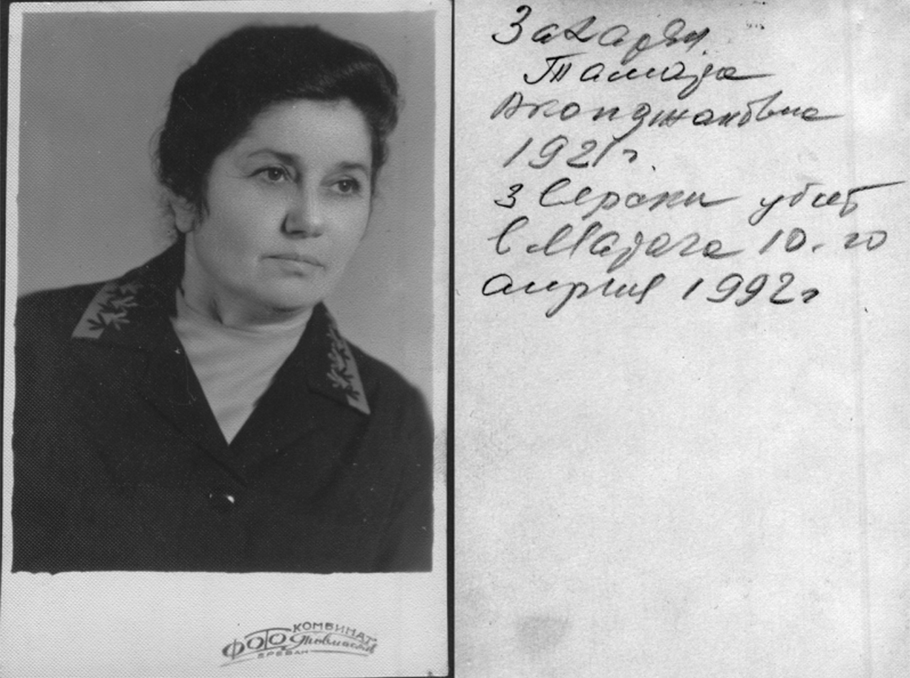 Tamara Zakaryan, one of the women killed in Maragha on April 10, 1992
Tamara Zakaryan, one of the women killed in Maragha on April 10, 1992
Where should the people of Maragh go? Which Maragha should I talk about? We had been displaced from Iran in 1828. We had been displaced from Maragha and became habitants of New Maragha, now we left it again. Why did they relocate us to the village of Aghdam province, instead of providing us with 200-300 hectares of land in Martakert? Now they tell us to leave Aghdam. Why should I leave the village when I have my own rifle? Let me fight and lose then to leave a village. 7 provinces and Shushi were taken without struggle. When Azeris said that they were taking revenge for Khojaly, it was a spectacle played by them. Now what are they taking revenge for? They continued the massacre. Their aim is to eliminate Armenians. Now when the 7 provinces have been handed to them, they have occupied the heights of the borders of Armenia and threaten our statehood. What is their purpose now?”
***
Vrej Sarukhanyan was the first journalist to visit Maragha after this tragedy, who witnessed fresh traces of a horrific massacre with his cameraman. The village had been completely destroyed a few hours later after being under the control of the Azerbaijani military. This scene left an indelible trace on Vrej Sarukhanyan's memory. It is interesting that սthe journalist had reached Maragha on his own initiative, and the government agencies were more passive in covering and sharing what had happened in Maragha.
“On April 10, I was in Stepanakert and was aware of the cruelty in Maragha. They were talking about some incidents, but nothing definite was said. We could hardly get any information. I did my best to find petrol but failed. They said that Serj Sargsyan was dealing with such issues. I went and told Serj Sargsyan to give me a can of gasoline for “Lraber” TV news. He answered: “I can’t, as the situation is very bad and we provide gasoline with bottles only to ambulaces”. “Tell me who has gasoline in the car in order to give me some or share the car with me”, - I asked. “There was some gasoline left in the president Arthur Mkrtchyan’s “Niva” but, keep it confidential, - said Serj Sargsyan. I visited the president and explained to him that the situation was very bad and I should do video recording for “Lraber” TV news.
He was aware of the situation too. He suggested that I wait a little and to go there together, as there wasn’t enough fuel for 2 cars. He was a very noble and ordinary person. As soon as I entered, he stood up, I was surprised. “You are the president, why should you stand up?”, - I asked. “It is a shame not to stand up”, - he answered. Well, he was much younger than me.
On April 11, in the morning we reached Maragha and saw that the whole village had been destroyed. There were corpses along the road. On the main road to the village I saw 17 or 20 corpses of Turkish soldiers. Suddenly I saw a man from Karabakh who shouted “Ua, ua, ua, ua, Kasimov, Kasimov, damn you”...
“What happened, brother”, - I asked. “It is Kasimov, a policeman from Mirbashir who persecuted us so much”, he answered by severely kicking the corpse. “How did you guess that he is Kasimov? “Wait”, - he answered, rummaging in Kasimov’s pockets and taking out the policeman's ID. It was really “Kasimov”.
Armenian soldiers have never desecrated Turks’ corpses. In other countries you can see corpse looting, but here, never.
We were walking along the streets and saw a TV-set, refrigerator, a dead cow, and a sheep. Everyone was shot and killed. The village was totally robbed. Whatever they managed they robbed, the rest was thrown in the streets. The village was in ruins ․․․ There was no breath. A bird perched on the door, was chirping like a mourner. I told the cameraman to capture that moment. Everything was destroyed, everyone was severely killed. It reminded me of 1915. Yes, I clearly felt what my grandfathers had survived in Sassoon. Maybe in 1915 it was milder, the Turks killed, the Kurds came and robbed. But here people were ripped and dismembered.
I was informed that Arthur had urgently left for Stepanakert. I was surprised and angry. How should we leave now? Then I said “wait!”. Zori Balayan, Caroline Cox and representatives of foreign TV channels were coming. The hole, where 20-25 civilians were buried, Caroline Cox asked to open in order to make a video recording. She also saw bloody sickles.
On our way back we reached Drmbon, and Zori Balayan told us that we couldn't get out as Azeris were bombarding and we would be killed.
“I have a Greek sister in origin and we should stay at her place”. We had a long conversation with Caroline Cox. She was shocked, it was terrible.
The next day we took a plane. There were a few wounded people on stretchers inside the plane. There were no seats. We were falling from tremors. I saw how Caroline Cox fell down, I tried to help her and she said. “No problem”. It turned out that they shot our plane. While landing, the plane rubbed its tail on the ground, we somehow got off. Now we didn’t believe that we arrived alive. The door opened and we jumped out without the stairs.
***
The Maragha massacre is the most tragic page for the Armenians of Artsakh in the war of the 90s. On April 10, 1992, an armed attack by the Azerbaijani military was followed by a brutal massacre in the village of Maragha (still under Azerbaijani control) where about 50 civilians were killed and 38 were taken prisoner.
It is known that 30 of the killed people were women. According to the “Helsinki Watch” human rights organization, 18 women, 9 children, 3 elderly people and one blind person were among the prisoners.
In the documentary about the Maragha massacre "Ordinary genocide. Maragha, April 10, 1992", Karine Poghosyan, a former resident of Maragha, who was taken prisoner in Azerbaijan with her two young children, remembers that hellish day.
"We must destroy you until the last person, Karabakh is ours, you must be destroyed but not to be displaced. We must destroy all of you, Karabakh is ours, we will live here, - they said. They constantly cursed the Armenians and said, - "You, damned Armenians are dirty."
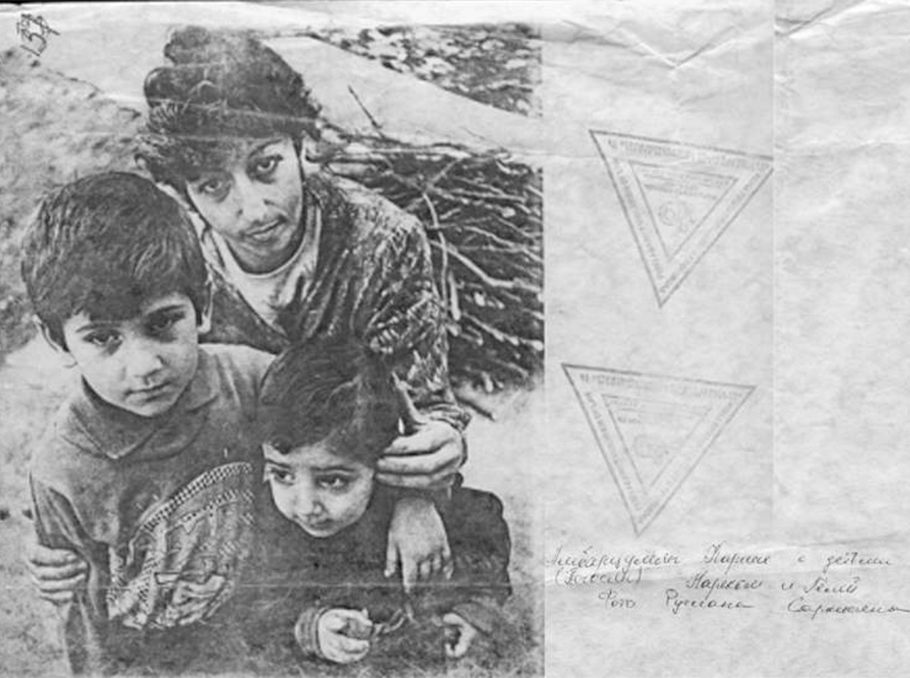 Karine and her kids
Karine and her kids
After exchanging Karine and her son, her daughter was in the list of missing people for a short time, who was found one and a half months later in one of the orphanages. The process of returning the child was delayed until a year and seven months, when the child was already 3 years old.
"The nanny accused me of leaving my child, because she thought I had taken her to the orphanage by my own will. At that moment I felt nothing. I thought it was just a minute, I would pick up the baby and leave. But the child did not want to come with me. She was clinging to the nanny and cried. The child did not speak at all. And a few days later she began to utter Azerbaijani words. Later, she adapted slowly. But she was frightened. As soon as she saw a soldier or a car, she shouted" Karine Poghosyan remembers.
Karine's sister, Zarine Poghosyan, returned from captivity a week later and died some time later in Martakert hospital. Zarine and her father, who had come to exchange the girls and grandchildren, were severely wounded by a mine explosionon their way back. The mother of the family, Sveta Poghosyan, said that the girl’s neck had been injured with a cutting-piercing tool, as well as her breast had been burned with a cigarette. Azerbaijanis tore her earlobes, taking away her gold earrings. Zarine Poghosyan died from a severe belly injury.
Human rights activist Baroness Caroline Cox, a member and former Deputy Speaker of the British House of Lords visited the village on April 11. In one of her interviews she remembers Maragha, -"When we went there, we saw civilians’ decapitated corpses. I have seen all this with my own eyes, dismembered human bodies lying on the ground. They even burned people alive. I saw the burnt remains of a woman. Then, they desecrated corpses, after they looted the houses and set them on fire.

Attacks of the Azeris and Armenians were totally different. I know that because I was here during the war. When the Armenians had to attack the village where the Azeris lived, they warned to evacuate the civilians in advance, so that the losses among the population would be minimal.
Monte Melkonyan and the others acted like this. Before entering Kelbajar, the Armenians warned the population with loudspeakers to get out and thus be saved. And when the Azeris besieged the village, they did not warn about it; they killed everyone they met on their way, without exception, in the cruellest way."
According to the Baroness, at that time it was unsafe enough to bring foreign journalists to Maragha. Caroline Cox also mentioned that the well-known British media promised to publish the article about the Maragha massacre, but later refused to do so.
““The Daily Telegraph” agreed with me on an exclusive report using the photo materials on its pages, so I did not turn to other newspapers. Time passed, but no publications appeared. I called the chief editor, and learned that he had changed his mind about publishing an article. "But you published a report about the events in Khojaly a few weeks ago. Why don't you want to publish the truth about Maragha?”, - I asked. He answered, - "I do not think we should deal with tragedies while maintaining balance." And he hung up the phone. "
***
Due to UN Convention on the Prevention and Punishment of the Crime of Genocide, genocide means any of the following acts committed with intent to destroy, in whole or in part, a national, ethnical, racial or religious group, as such:
a. Killing members of the group;
b. Causing serious bodily or mental harm to members of the group;
c. Deliberately inflicting on the group conditions of life calculated to bring about its physical destruction in whole or in part;
d. Imposing measures intended to prevent births within the group;
e. Forcibly transferring children of the group to another group.
According to Article 3 of the same Convention the following acts shall be punishable:
(a) Genocide;
(b) Conspiracy to commit genocide;
(c) Direct and public incitement to commit genocide;
(d) Attempt to commit genocide;
(e)Complicity in genocide.
Article 4 of the Convention also states: Persons committing genocide or any of the other acts enumerated in article III shall be punished, whether they are constitutionally responsible rulers, public officials or private individuals.
Sofia Hakobyan
Translated by Gohar Sndoyan and Anna Kurghinyan
















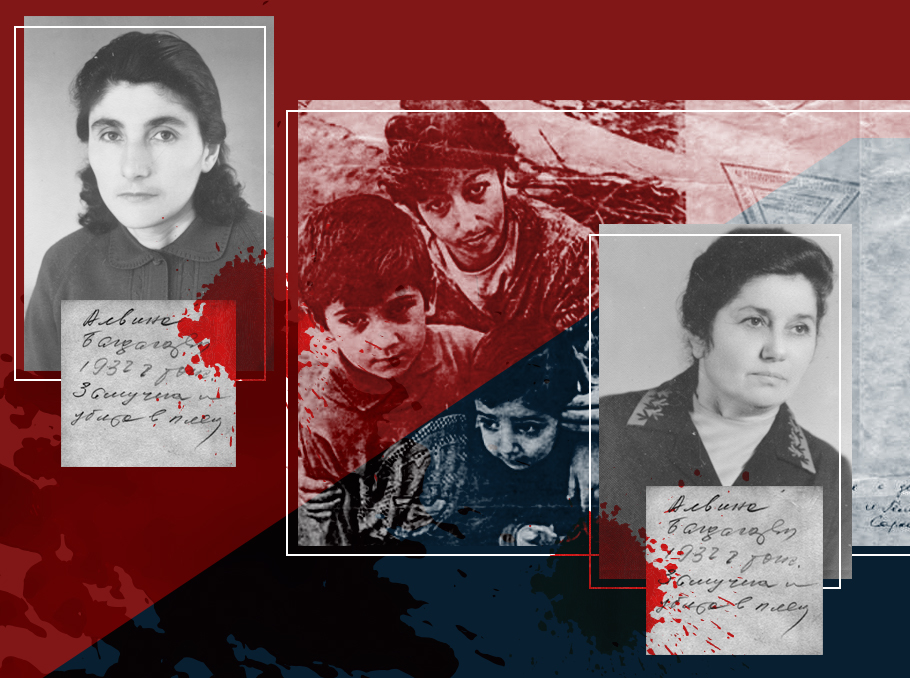

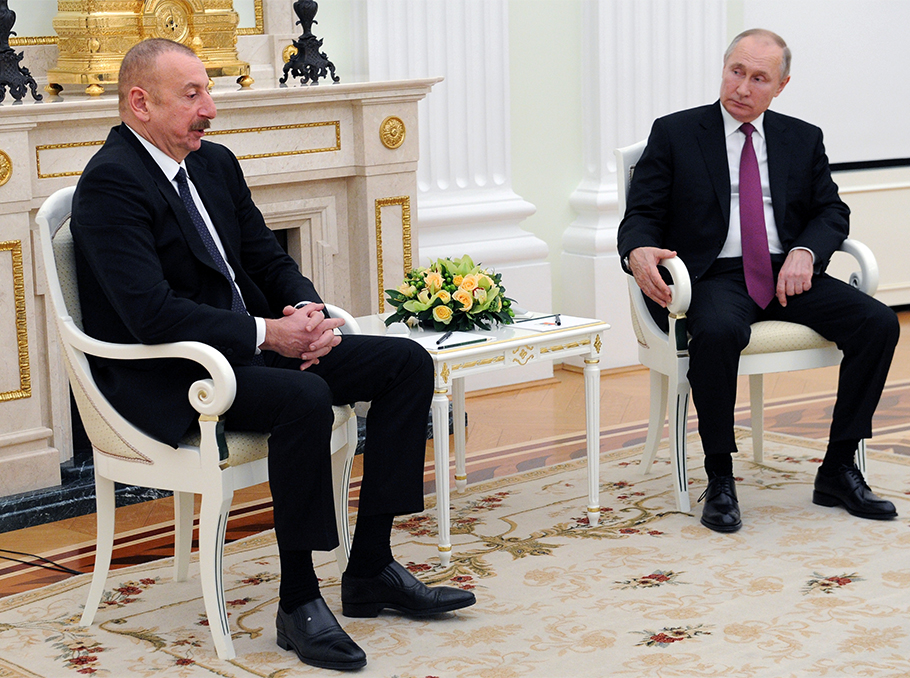
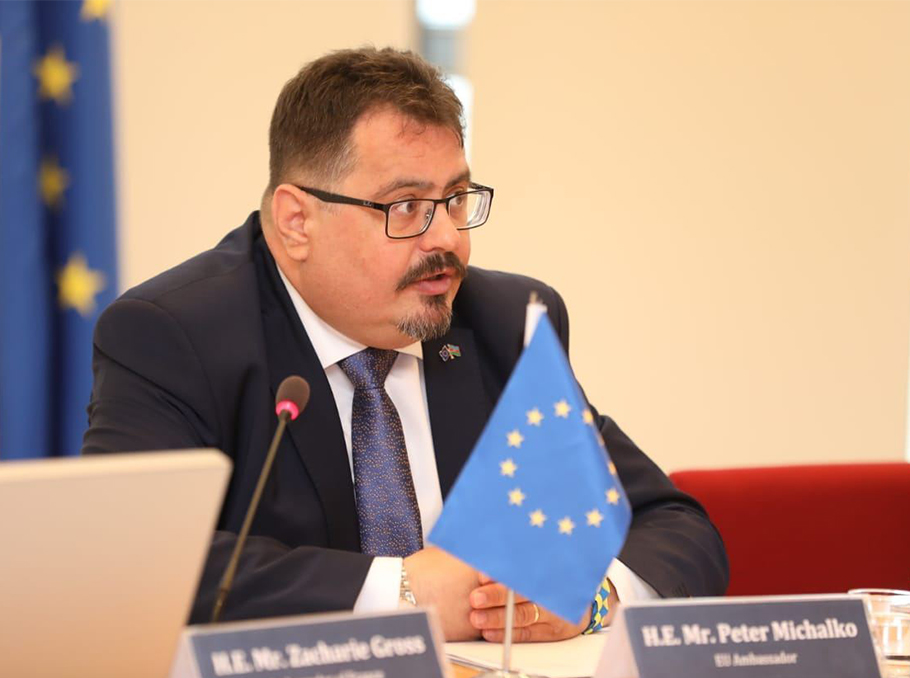
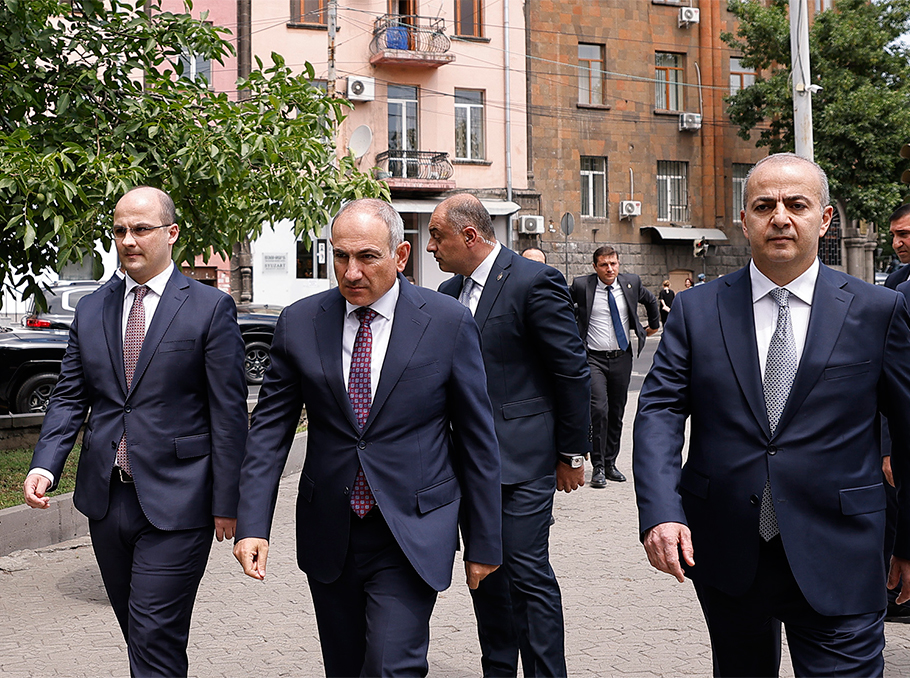



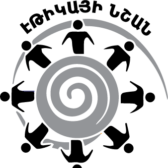



Comments
Dear visitors, You can place your opinion on the material using your Facebook account. Please, be polite and follow our simple rules: you are not allowed to make off - topic comments, place advertisements, use abusive and filthy language. The editorial staff reserves the right to moderate and delete comments in case of breach of the rules.